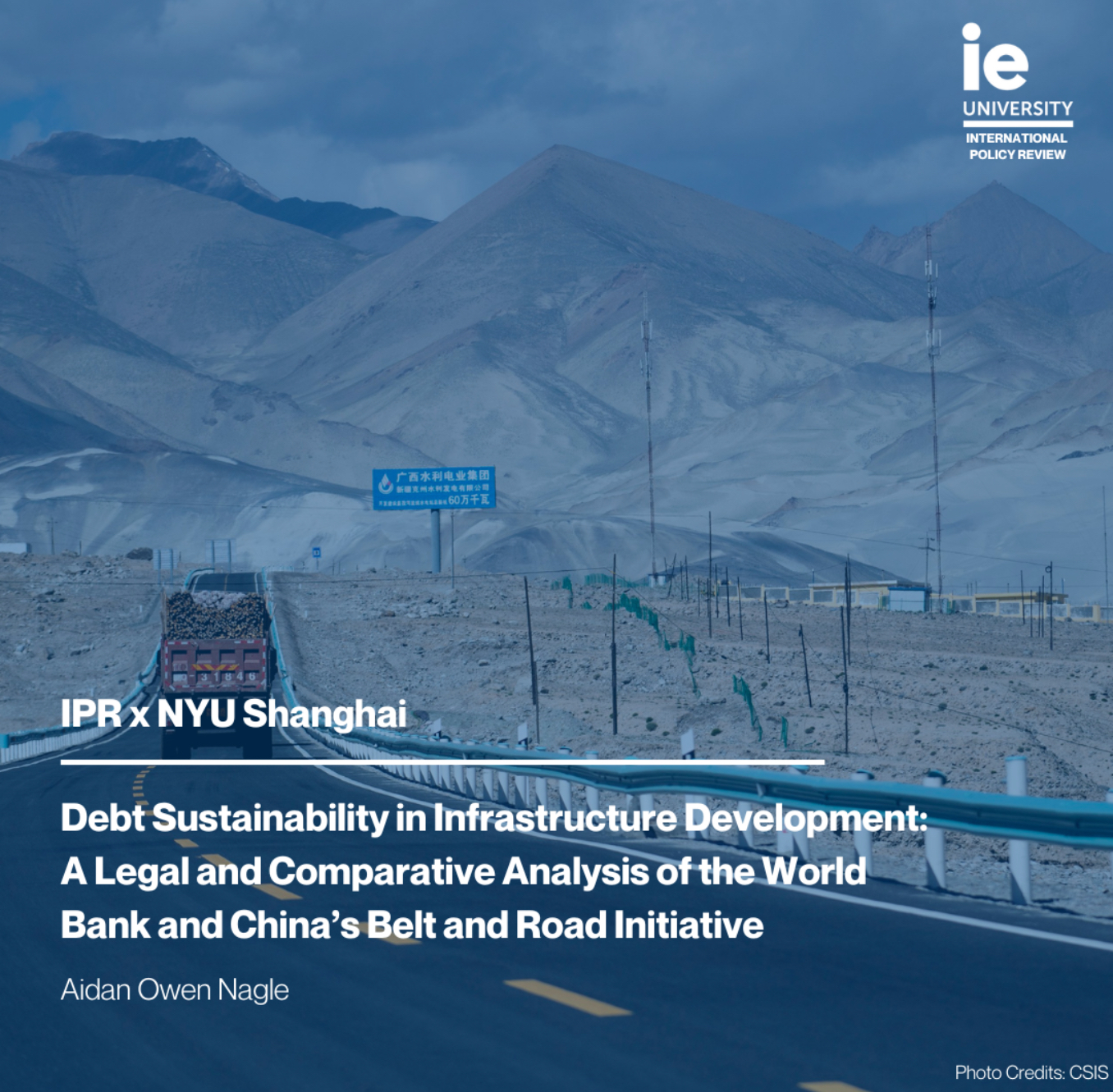
01 Jul Debt Sustainability in Infrastructure Development: A Legal and Comparative Analysis of the World Bank and China’s Belt and Road Initiative
Aidan Owen Nagle
Law and Policy Society, NYU Shanghai, Shanghai, China
B.A. Political Economy, B.A. Global China Studies
E-mail: aon2013@nyu.edu
Abstract
This paper explores the interaction between the World Bank’s legal frameworks for debt sustainability and Chinese infrastructure financing under the Belt and Road Initiative (BRI) in developing countries through a legal and political analysis focusing on transparency, enforcement mechanisms, and debt restructuring approaches. The World Bank emphasizes project-based financing, environmental and social safeguards, and multilateral coordination, while the BRI offers more flexible loan terms but lacks the structured legal framework and transparency of the Bank’s approach. By examining the China-Pakistan Economic Corridor (CPEC), this paper highlights the practical consequences of these strategies. It concludes by recommending that the BRI enhance transparency in project development to build accountability and trust. At the same time, the World Bank could adopt more flexible safeguards tailored to the unique contexts of recipient countries to compete with the BRI, offering developing countries more options in infrastructure financing.
READ THE FULL ARTICLE HERE (Page 1-5)
Keywords: infrastructure development, debt sustainability, development finance, economic development, legal frameworks, legal analysis, World Bank, Belt and Road Initiative (BRI).

Sorry, the comment form is closed at this time.